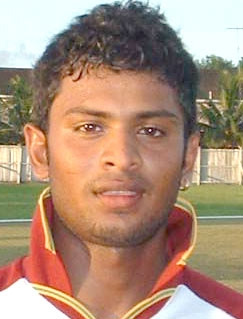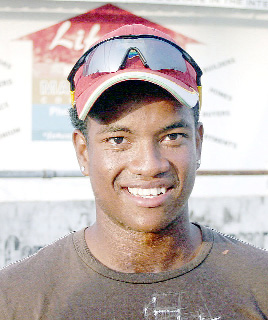The 36th edition of the premier West Indies Cricket Board (WICB) limited overs tournament, now branded the Clive Lloyd/Regional Super 50 Cup, concluded last week here in Guyana, with Chris Gayle’s Jamaican side, winning their eighth regional title, while simultaneously securing the prestigious domestic double for 2011.
But the ecstasy the boys from the `Land of Wood and Water’ would have felt for being the Caribbean’s standard bearers of the 2011 domestic season was tempered by the observation from pundits that the quality of cricket on display was average. Thus there was a high proportion of more negative than positive assessment of player performances.
Guyana

It has been a difficult year for local cricket on and off the field. Guyana finished last in a four-day competition earlier in the year without winning a game, and failed to qualify out of the group stage of the Caribbean Twenty20 in Antigua.
All of this, compounded by the controversy that surrounded the local Guyana Cricket Board (GCB) elections—where local county boards questioned the legitimacy of the elections—escalated when President Bharrat Jagdeo invited all parties and WICB President Julian Hunte to State House for a meeting. The meeting did not bear any fruit.
Entering the Regional Super50 on home soil, the national cricket team affectionately known as the `Amazon Conquerors’ was afforded the opportunity to restore attention to activities on the cricket field.
The local side ended up in the semi-finals. Under any normal circumstance attaining a semi-final position in any competition would be characterized as a good accomplishment.
Especially considering that key players such as Ramnaresh Sarwan, Sewnarine Chattergoon and Narsingh Deonarine were missing due to injury and fitness-related circumstances; Shivnarine Chanderpaul and Davendra Bishoo on West Indies duty and Veerasammy Permaul and Brandon Bess off representing the Sagicor High Performance Centre (HPC).
However, if one analyzes the opponents Guyana overcame in the group stage, before losing in the semi-final to arch rivals, Trinidad and Tobago – one would realize that they were not as strong as they should have been.
They toppled the Windward Islands team, who even in the absence of West Indies captain Darren Sammy, were always just a team whose strength was in its bowling ranks.
After the washout game against HPC, they toppled a severely depleted Barbados who had a plethora of players missing, owing to West Indies commitments, the HPC and Combined Campuses and Colleges (CCC).
In a lot of ways Guyana went into that semi-final undercooked, against a Trinidad side that had just come off the rigours of high-quality Twenty20 cricket during the Champions League tournament in India.
But looking past all of the aforementioned points, probably the most disappointing aspect of Guyana’s campaign was Assad Fudadin and Leon Johnson not being able take their game to the next level.
If Guyana had any chance of repeating the home triumph of the 2005/06 KFC Cup, these two talented batsmen needed to put on commanding performances to propel the team’s challenge.
Fudadin, being captain, fell short of the mark, scoring a paltry 58 runs at an average of 19 from his three games. Johnson fared better scoring 147 at an average of 49, with two classy half-centuries, as he finished the tournament as the third highest run-scorer.

These were not dominant displays though and in a lot of ways showed that these two players who shone prominently at youth level, are still in the development stage. When Sarwan and Chanderpaul were ages 24 and 26 respectively, they had already established themselves on the world stage as key players in the West Indies middle-order.
With Chanderpaul’s days as Guyana and West Indies cricketer heading to the twilight, and Sarwan unsure of a place in the West Indies team, it’s imperative to Guyana’s future that the Demerara and Berbice left-handers turn over a new leaf.
West Indies
During the 2011 home season versus Pakistan and India it was disconsolately noticeable that the current West Indies batsmen had developed a stark “Achilles Heel” against spin bowling of varying qualities.
This disturbing trend continued during the just concluded Bangladesh tour with the West Indies being bowled out for 61 in the third one-day international along with debut left-arm spinner Elias Sunny claiming a five-wicket debut haul against our leaden-footed batsmen.
So, the events of the Regional Super50 tournament which culminated with spinners being amongst eight (8) of the top ten wicket-takers, led by Sunil Narine – the latest off-spin/doosra conjurer with 15 wickets at 11.86 – pose a real dilemma.
It is deepened by the fact that there was only one total over 250 (against nine under 200) in the entire competition – and Jamaica’s 255 for three against CCC was based almost solely on Chris Gayle’s 147, the only hundred of the tournament.
I don’t know how much more we can tolerate watching the West Indies batsmen being mesmerized by spin like this and for a tournament which saw the semi-finals and finals broadcast live on ESPN to audiences all over the globe, it wasn’t a great advertisement for regional cricket.





